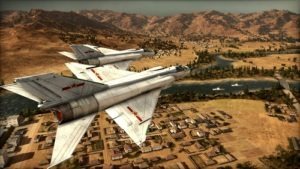
A turn may be a compound or "S" shape providing that the sum of all angles remains less than 90 degrees.Ī player fires his ship's guns by laying a firing arrow (or arrows if there are more than one target) near his ship and sighting it at his target. That is a ship may not make an abrupt 90 degree turn, then proceed farther in a straight line. It may make a turn of up to 90 degrees (a right angle) on any move, The turn must be made in a natural arc using substantially all the length of the move. However, it must move at least two knots so long as it is able. In rooms of normal size, 14 millimeters to the know is appropriate.Ī ship may be moved any distance up to the number of knots remaining to it according to its ship card. Each division of the scale represents one knot of speed. Each cycle has three parts: A moving phase, a shooting phase and a measuring phase.Įach ship is moved a distance determined by reference to a speed scale which can be a calibrated strip of cardboard. The game is played in cycles called "moves" or "salvos. A chart relating size of gun, thickness of armor and range is used to determine if armor has been penetrated.Įach player is given a ship cars, a speed scale, firing arrows and paper on which to record damage to his ship and, if he wishes, the results of his own shooting.

Hits which strike ships from end-on, strike the usually thinner deck armor. Hits on ships broadside to the firing ship are assumed to strike the belt armor. Such hits inflict twice the usual damage.


Damage would continue to accumulate with succeeding hits until the ship sank or the action ended.Īt short range, hits may penetrate the target's armor. After three more 16 inch hits, damage would total 26,375 points, 1-40mm mount, a 5.25" gun and a 14 inch rifle would then be out of action. The ship's speed would drop to 28 knots (last entry on the card above 10,550 points). After a second 16 inch hit, however, damage would total 10,550 points. If this ship were hit by one 16 inch shell (5,275 points damage), its speed and firepower would be affected. Below is an extract from a ship card for a British battleship of the KING GEORGE V class (Main battery: 10-14" guns, speed: 29 1/4 knots, point value: 230,196). The speed and offensive power remaining to a ship are determined by references to her ship card, on which is a pre-computed table of damage and effect. Thus when a ship has received hits equaling half its point value, her speed is cut by 50 percent and by half its guns (of each caliber) are out of action. The speed and offensive power of the decrease in proportion to accumulated damage. Thus a light cruiser's six inch guns do 250 points damage per hit while the 16 inch rifles of battleship inflict 5,275 points per hit.Īs the game progresses, the value of hits each ship has received is deducted from its point value. Similarly, ships' guns are assigned damage-inflicting capabilities in rough proportion to the to the weight of the shell fired by the gun. Typically destroyers have values between 5,000 and 10,000 points, cruisers between 25,000 and 80,000 and battleships between 150,000 and 300,000. Model ships of 1:1200 or 1:2400 scales are the best to use for these games.Įach ship is assigned a point value, calculated from her armament, armor, speed and displacement. Larger encounters have seen 60 and more players on a side. An interesting engagement can be fought by two players. The game was played with model warships on a floor, the larger the better. Long before the historic naval engagement at the mouth of the River Plate for example, the game had predicted that three small British cruisers could defeat the vaunted German "pocket battleship" ADMIRAL GRAF SPEE. Rules such as these achieve a high degree of historical realism in that they incorporate the actual capabilities of the real ships (and aircraft).ĭeveloped in the 1930's and revised in the light of WWII experience, Fletcher Pratt's Naval War Game accurately reflects the problems and results of naval combat. Wargaming rules since then, such as Alnavco's SEAPOWER (See Warship Data section in this site.), have been greatly expanded and improved but owe a debt of gratitude to Mr.

Note: This is generally considered to be the first naval wargame for use with miniature warship models. W A R G A M I N G AN INTRODUCTION TO FLETCHER PRATT'S NAVAL WARGAME By Clarke Walzer, Chicago, IL


 0 kommentar(er)
0 kommentar(er)
